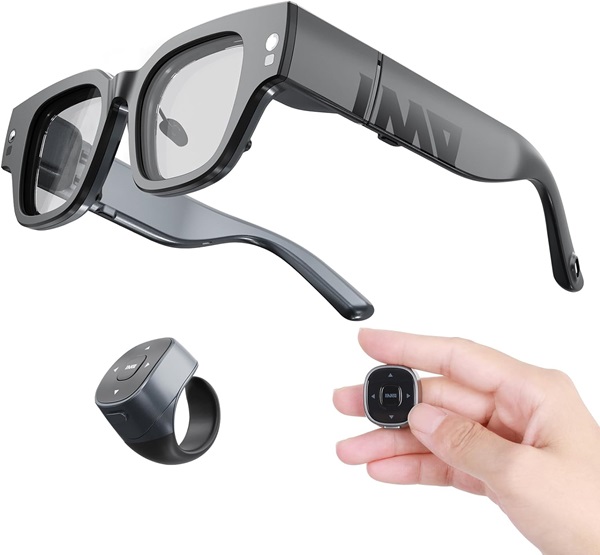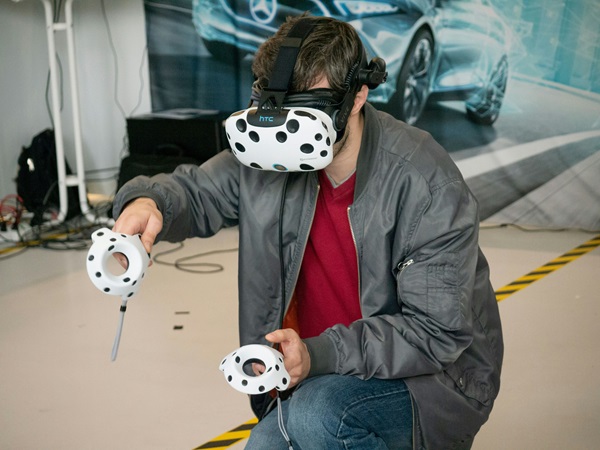Smart glasses are taking the tech world by storm, and their ascent from futuristic fantasy to mainstream Marvel is nothing short of extraordinary. These Augmented Reality (AR) eyepieces are poised to redefine how we interact with digital information and our surroundings. In this in-depth exploration, we unveil the intricate world of AR eyewear, from its historical origins to futuristic projections, revealing its applications, challenges, and the very future it promises. In this article, we will explore the AR glasses features.

What are Augmented Reality Glasses?
Let’s start by understanding what AR glasses features truly entail. Augmented Reality Glasses are wearable devices that overlay digital information, images, or animations onto the user’s view of the real world. These high-tech spectacles combine real-world experiences with digital data overlay. The fusion of cutting-edge technologies such as display optics, cameras, and sensors, culminates in a seamless interaction between the physical and digital realms. Welcome to the augmented reality revolution!
Historical Perspective
The AR eyewear journey began with imaginative concepts and crude prototypes. Over the years, it evolved through numerous milestones. These eyewear innovations emerged from science fiction reveries to reality, shaping the contemporary tech landscape.
Key Players in the Industry
A slew of major players are carving their niche in the AR eyewear realm. Tech giants like Google, Microsoft, and Apple lead the charge, competing to produce the ultimate AR glasses. The competitive landscape is rife with innovation, promising a captivating future for consumers.
AR Glasses Features and How it Works
Understanding the magic behind AR glasses features is fundamental. They employ advanced display technology, sensors, cameras, and seamless connectivity to merge digital content with the real world. It’s a symphony of complex hardware and intuitive user interfaces.
Applications of AR Eyewear
AR eyewear isn’t just for the tech-savvy; its potential spans various industries. It enhances productivity in industrial settings, revolutionizes healthcare, offers immersive entertainment, and even finds its place in education, creating dynamic learning environments.

Benefits of AR Glasses
The advantages of AR glasses features are multifold. They boost productivity by providing hands-free access to critical information, enhance safety by offering real-time data to workers, and immerse us in captivating entertainment experiences. Additionally, they hold promise for accessibility features that can revolutionize the lives of individuals with disabilities.
Challenges and Limitations
While AR glasses offer a glimpse into the future, they are not without hurdles. Privacy concerns, social acceptance, limited battery life, and technical obstacles need to be overcome for these futuristic devices to become part of everyday life.
Real-World Use Cases
AR glasses are already making their mark in various domains. In healthcare, Google Glass assists surgeons during procedures. In industry, Microsoft’s HoloLens aids workers with on-the-job tasks. Even Snapchat Spectacles bring AR entertainment to our social lives, while everyday scenarios are beginning to benefit from this technology.
Augmented Reality vs. Virtual Reality
It’s essential to distinguish AR glasses features from its cousin, Virtual Reality (VR). AR enriches the real world with digital information, while VR immerses users in entirely virtual environments. Both have their unique applications and implications for the future of technology.

Innovations in AR Glasses
AR glasses features are not static. They’re evolving rapidly, with innovations in form factors, display quality, and user interfaces. Voice and gesture control, as well as future technological developments, are continuously shaping the AR eyewear landscape.
The Fashion Aspect
AR glasses are not just about technology; they’re also a fashion statement. The evolution of their designs is ongoing, blending aesthetics with functionality, and offering customization options for the style-conscious.
Price Ranges and Accessibility
While initially perceived as niche, AR glasses are becoming more accessible. They now cater to various price ranges, from affordable models to premium and luxury eyewear. The path to wider accessibility is paved with innovation and market expansion.
User Experience and Comfort
The user experience with AR glasses features is paramount. Ergonomics, weight distribution, adjustability, and fit are critical for user comfort. Early adopters’ feedback provides insights into improving these aspects.
The Role of Developers
Developers play a pivotal role in the AR ecosystem. They create applications that leverage the potential of AR glasses features, making them versatile tools. Third-party apps add an extra layer of functionality and expand the horizons of what these glasses can do.
Regulatory and Legal Aspects
With great technology comes great responsibility. Privacy regulations, safety standards, and intellectual property concerns are central to the future of AR glasses. Navigating these waters is essential to ensure the technology’s ethical and lawful development.
User Concerns and Misconceptions
The public perception of AR glasses is often riddled with misconceptions. Privacy paranoia, security myths, and the potential social impact are subjects of concern and debate as we embrace this technology.
Case Study: AR Eyewear in Education
One of the most promising applications of AR glasses is in education. They bring augmented reality into the classroom, offering enhanced learning experiences, interactive lessons, and boundless possibilities for the future of education.
The Role of Big Tech in AR Development
Tech giants are at the forefront of AR development. Their investments, research, and collaborations shape the industry’s trajectory. This interplay between competition and cooperation sets the stage for AR’s future.
Future Predictions for AR Eyewear
The future of AR glasses is bright and filled with possibilities. As form factors evolve, integration with other technologies deepens, and wider adoption becomes a reality, we stand on the brink of a new era in human-computer interaction.
Conclusion
In summary, AR glasses features and their journey is a testament to the relentless pursuit of merging the real and the digital. As the revolution continues, we find ourselves on the cusp of a future where these smart glasses become as ubiquitous as the smartphones we carry today.

